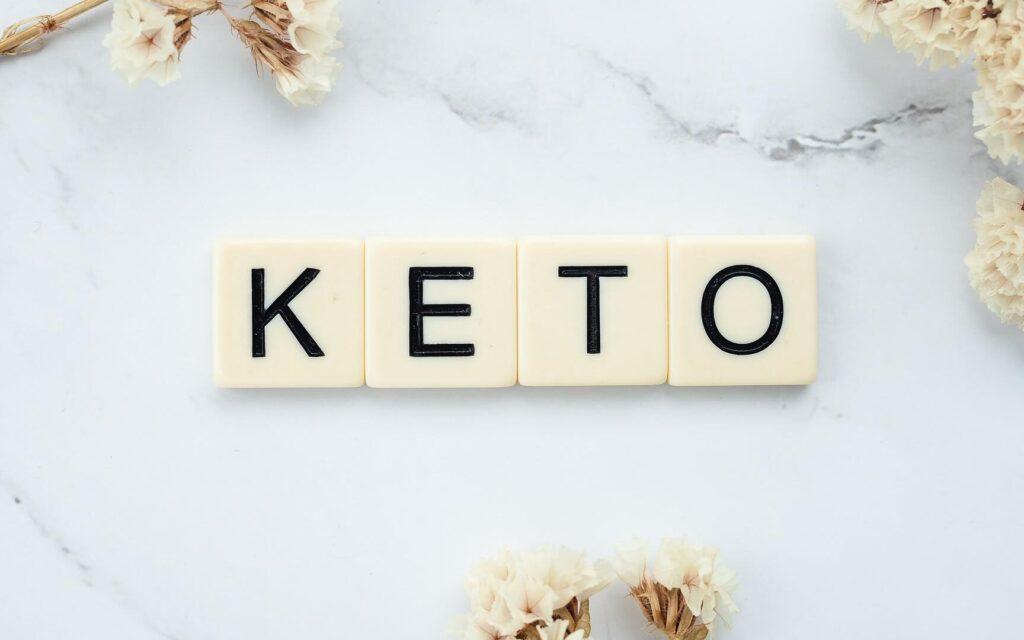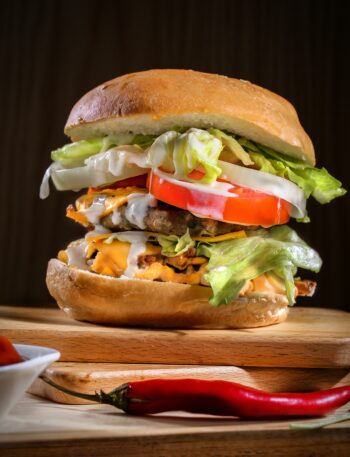Introduction
Also Read – Free 30 day keto diet plan generator
The ketogenic diet 101, commonly referred to as the keto diet 101, has gained immense popularity in recent years as a weight-loss and health-improvement strategy. It’s a low-carb, high-fat diet that puts your body into a state of ketosis, where it burns fat for energy instead of carbohydrates. While the this has been around for almost a century, it has gained a significant following in recent years due to its effectiveness for weight loss and other health benefits, such as improved blood sugar control and reduced inflammation.
Also Read: lazy-keto-meals

Also Read: keto-dinner-recipes
However, despite its popularity, there is still some confusion and misinformation surrounding this diet. In this comprehensive guide, we will provide you with everything you need to know about this diet, including its benefits, potential side effects, and tips for success. We will also provide you with meal plans and recipes to help you get started. Whether you’re a beginner or a seasoned keto dieter, this guide will equip you with the knowledge and tools you need to succeed on the keto diet.
Also Read: keto-snacks-recipes
Benefits of the Keto Diet 101 | Ketogenic diet 101
Also Read – Free 7 day vegetarian keto meal plan generator
There are several potential benefits to following this diet, including:
- Weight Loss: This is an effective way to lose weight, as it promotes fat loss by putting the body into a state of ketosis. When you restrict your carbohydrate intake, your body burns stored fat for energy instead of glucose.
- Reduced Inflammation: This has been shown to reduce inflammation in the body. Which may help alleviate symptoms of conditions like arthritis, inflammatory bowel disease, and acne.
- Improved Mental Clarity: Many people who follow this diet report increased mental clarity and focus. This may be due to the fact that ketones are a more efficient fuel source for the brain than glucose.
- Lowered Blood Sugar and Insulin Levels: By limiting your carbohydrate intake, you can lower your blood sugar and insulin levels. This is particularly beneficial for people with type 2 diabetes or insulin resistance.
- Reduced Risk of Certain Diseases: This has been shown to reduce the risk of several chronic diseases, including heart disease, cancer, and Alzheimer’s disease.
Also Read: keto-air-fryer-recipes

Foods to Eat on the Keto Diet
Also Read: keto-dessert-recipes
This diet focuses on high-fat, low-carb foods. Here are some examples of foods to eat while following Keto Diet 101.
- Meat: Beef, pork, chicken, lamb, and other meats are all allowed on this diet. Aim for grass-fed, organic meats when possible.
- Fish and Seafood: Fatty fish like salmon, tuna, and mackerel are excellent sources of omega-3 fatty acids, which are beneficial for heart health. Shellfish like shrimp, crab, and lobster are also keto-friendly.
- Eggs: Eggs are a staple of this diet, as they are high in protein and healthy fats.
- Dairy: High-fat dairy products like butter, cheese, and cream are allowed on this diet. Avoid low-fat or fat-free dairy products, as they often contain added sugars.
- Nuts and Seeds: Almonds, walnuts, macadamia nuts, and chia seeds are all keto-friendly snacks.
- Healthy Fats: Olive oil, coconut oil, avocado oil, and other healthy fats are staples of the this. Use them for cooking or as a dressing for salads.
Also Read: keto-shrimp-recipes

Foods to Avoid on the Keto Diet
Also Read: high-protein-low-carb-soup-recipes
The keto diet involves limiting your carbohydrate intake, so there are several foods you should avoid while following Keto Diet 101:
- Grains: All grains, including wheat, rice, oats, and corn, are off-limits on this diet.
- Sugar: Sugar in all its forms, including table sugar, honey, and maple syrup, should be avoided on the keto diet.
- Fruit: While fruit is healthy, it is also high in carbohydrates. On the keto diet, you should limit your fruit intake to small amounts of berries.
- Starchy Vegetables: Potatoes, sweet potatoes, carrots, and other starchy vegetables are high in carbohydrates and should be avoided on this diet.
- Processed Foods: Processed foods like chips, crackers, and cookies are high in carbs and should be avoided.
Also Read: keto-burger-recipes
Keto Diet Meal Plan
Also Read: keto-tortilla-recipes
Here is a sample one-day meal plan for the keto diet 101:
- Breakfast: Scrambled eggs with bacon and avocado.
- Lunch: Grilled chicken with a side of sautéed spinach.
- Snack: A handful of almonds.
- Dinner: Baked salmon with asparagus and a side salad with olive oil dressing.
- Dessert: A small serving of berries with whipped cream.
Also Read: keto-ice-cream-recipes

Keto Diet Side Effects | Keto diet side effects long-term
Also Read: basic-rules-of-keto
While the keto diet 101 can be effective for weight loss and other health benefits, it can also have some side effects. Here are a few potential side effects of this diet:
- Keto Flu: When you first start this diet, you may experience symptoms like headaches, fatigue, and nausea. This is often referred to as the “keto flu” and is a result of your body adapting to the new diet.
- Constipation: This diet is low in fiber, which can lead to constipation. To prevent this, be sure to eat plenty of non-starchy vegetables and supplement with fiber if necessary.
- Bad Breath: One common side effect of this diet is bad breath, which is caused by the production of ketones in the body.
- Nutrient Deficiencies: This diet is very restrictive, and it can be challenging to get all the nutrients you need. Be sure to supplement with vitamins and minerals as necessary.
Also Read: 7-day-vegetarian-keto-meal-plan
Keto Diet and Exercise
Also Read: the-science-behind-the-keto-diet
While exercise is not required to follow when following this keto diet 101, it can be beneficial for weight loss and overall health. Here are a few tips for exercising on the keto diet:
Also Read: keto-lunch-recipes
- Give Your Body Time to Adapt: When you first start this diet, your body may not have enough energy for intense exercise. Give yourself time to adapt to the new diet before pushing yourself too hard.
- Focus on Low-Impact Exercise: Low-impact exercise like walking, yoga, and swimming are ideal for the keto diet. They provide a gentle workout that won’t deplete your energy stores.
- Be Mindful of Your Macronutrient Intake: When exercising on this diet, it’s essential to pay attention to your macronutrient intake. You may need to increase your protein intake to support muscle growth and repair.
Also Read: keto-smoothie-recipes

Keto Diet and Social Life
Also Read: keto-diet-for-bodybuilders
One of the challenges of the keto diet is that it can be challenging to stick to when eating out or attending social events. Here are a few tips for navigating social situations on the keto diet:
Also Read – keto-breakfast-ideas-on-the-go
- Plan Ahead: If you know you’ll be attending an event where keto-friendly options may be limited, plan ahead by bringing your own food or eating beforehand.
- Focus on Protein and Vegetables: When eating out on the keto diet, focus on protein and non-starchy vegetables. Avoid dishes with bread, pasta, or other high-carb ingredients.
- Be Confident: Don’t be afraid to ask your server or host for keto-friendly options. Be confident in your dietary choices and don’t feel pressured to eat something that doesn’t align with your goals.
Also Read: low-carb-bread

Conclusion
Also Read: keto-salad-recipes
The keto diet can be an effective way to lose weight and improve your overall health. By limiting your carbohydrate intake and focusing on healthy fats and protein, you can put your body into a state of ketosis, where it uses stored fat for energy. While the keto diet can have some side effects, many people find it to be a sustainable way of eating in the long term.
Also Read – BMR and TDEE calculator
If you’re considering the keto diet, be sure to consult with a healthcare professional first to determine if it’s right for you.
Also Read: lazy-keto-food-list

FAQ
What is the keto diet, and how does it work?
The keto diet, short for ketogenic diet, is a low-carbohydrate, high-fat diet that aims to shift your body’s metabolism into a state called ketosis. In ketosis, your body primarily burns fat for fuel instead of carbohydrates. By drastically reducing carb intake and increasing fat consumption, the body produces ketones, which are used as an alternative energy source.
What are the main principles and macronutrient ratios of the keto diet?
The main principles of the keto diet involve significantly reducing carbohydrate intake and replacing it with healthy fats. The typical macronutrient ratio for the keto diet is around 70-75% of calories from fat, 20-25% from protein, and 5-10% from carbohydrates.
What are the primary benefits of following a keto diet?
The primary benefits of the keto diet include weight loss, improved blood sugar control, increased energy levels, reduced inflammation, and improved mental clarity. It may also have potential benefits for certain medical conditions like epilepsy, polycystic ovary syndrome (PCOS), and metabolic syndrome.
What foods should I eat and avoid on the keto diet?
On the keto diet, you should focus on consuming foods rich in healthy fats such as avocados, nuts, seeds, olive oil, and coconut oil. You should also include moderate amounts of protein from sources like meat, poultry, fish, and eggs. It’s important to minimize your intake of carbohydrates, including starchy foods, grains, sugars, and most fruits.
How do I calculate and track my daily macronutrient intake on the keto diet?
To calculate your macronutrient intake, you can use online keto calculators that consider your age, weight, height, activity level, and goals. Tracking apps or websites can help you monitor your daily food intake and ensure you stay within your desired macronutrient ratios.
What are some common challenges and side effects of starting a keto diet, and how can I manage them?
Common challenges when starting a keto diet include the “keto flu” during the initial adaptation phase, which may cause symptoms like fatigue, headaches, and irritability. To manage this, staying well-hydrated, replenishing electrolytes, and gradually reducing carb intake can be helpful. It’s also important to adjust portion sizes and monitor your body’s response to the diet.
Can I still exercise and maintain an active lifestyle on the keto diet?
Yes, you can still exercise and maintain an active lifestyle on the keto diet. However, during the initial transition period, you may experience a temporary decrease in performance due to the body adapting to using fat as fuel. With time, many individuals find that their energy levels stabilize, and some even report improved endurance and focus during workouts.
Are there any potential risks or considerations I should be aware of before starting the keto diet?
Before starting the keto diet, it’s important to consider potential risks and consult with a healthcare professional. Some individuals may experience nutrient deficiencies if they don’t consume a variety of nutrient-dense foods. Additionally, people with certain medical conditions, such as pancreatitis or liver disease, may need to avoid the keto diet. Regular monitoring of health markers is also recommended.









Great article! It provides a comprehensive guide to the keto diet, including its benefits, potential side effects, and tips for success. The sample meal plan and food list are also helpful.
Eva Anthony
[…] Also Read: the-science-behind-the-keto-diet […]
[…] Also Read: the-science-behind-the-keto-diet […]
[…] Also Read: the-science-behind-the-keto-diet […]
[…] Also Read: the-science-behind-the-keto-diet […]
[…] Also Read: the-science-behind-the-keto-diet […]
[…] Read more… […]
[…] Also Read: the-science-behind-the-keto-diet […]
[…] Also Read: the-science-behind-the-keto-diet […]
[…] Also Read: the-science-behind-the-keto-diet […]
[…] Also Read: the-science-behind-the-keto-diet […]
[…] Also Read: the-science-behind-the-keto-diet […]
[…] Also Read: the-science-behind-the-keto-diet […]
[…] Also Read: the-science-behind-the-keto-diet […]
[…] Also Read: the-science-behind-the-keto-diet […]
[…] Also Read: the-science-behind-the-keto-diet […]
[…] Also Read: the-science-behind-the-keto-diet […]
[…] The keto diet has become a popular way of eating in recent years, with many people adopting this high-fat, low-carb lifestyle in order to achieve weight loss and other health benefits. However, for busy people, it can be challenging to find the time to prepare keto-friendly meals. In this article, we will provide fast and flavorful lazy keto meals that are perfect for busy people who want to follow the keto diet. […]
[…] Also Read: the-science-behind-the-keto-diet […]
[…] Also Read: the-science-behind-the-keto-diet […]
[…] Also Read: the-science-behind-the-keto-diet […]
[…] Also Read: the-science-behind-the-keto-diet […]
[…] Also Read: the-science-behind-the-keto-diet […]
[…] Also Read: the-science-behind-the-keto-diet […]
[…] Also Read: the-science-behind-the-keto-diet […]